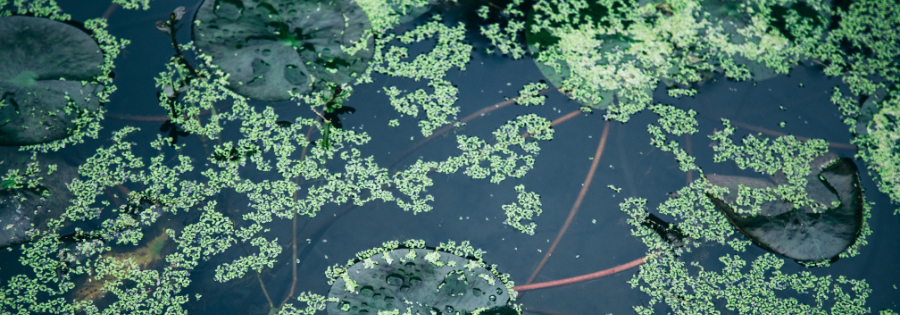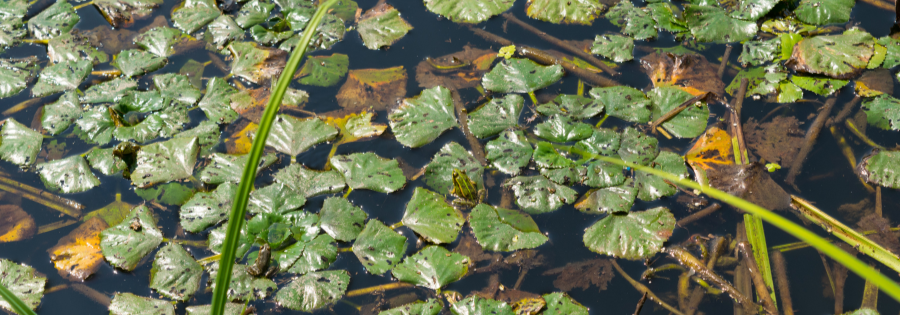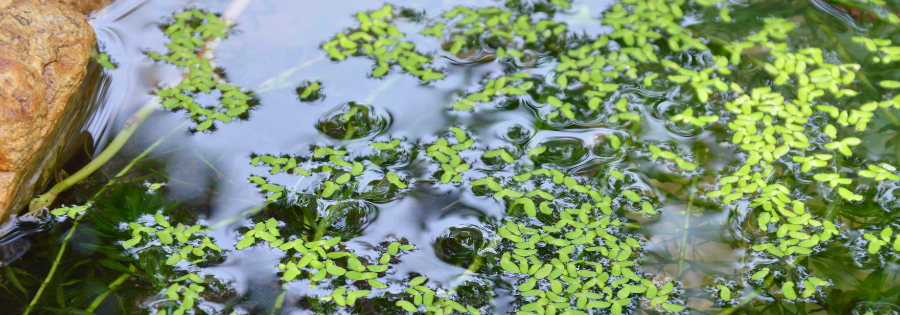5 Preventative Measures for Aquatic Vegetation Control

Keeping aquatic vegetation in check is a must for maintaining a healthy and balanced pond ecosystem. Uncontrolled plant growth can cause problems like cloudy water, low oxygen levels, and breeding grounds for mosquitoes. It also makes the pond look messy, blocks water flow, and can spoil recreational activities.
By sharing these preventative tips, we hope to help pond owners achieve a well-managed and flourishing pond environment.
The Importance of Controlling Aquatic Vegetation
Understanding aquatic vegetation is crucial for effective pond management. Various common aquatic plants populate ponds — ranging from submerged varieties like Anacharis and Hornwort to emergent plants such as cattails and water lilies. Each type plays a distinct role in the pond ecosystem, contributing to water oxygenation, nutrient cycling, and habitat for aquatic organisms.
Submerged plants, for instance, release oxygen during photosynthesis and help control algae by absorbing excess nutrients. Emergent plants offer shelter to fish and provide a surface for beneficial microorganisms. Recognizing the diverse functions of these plants aids pond owners in appreciating their contribution to a balanced aquatic environment.
Identifying Invasive Species
However, not all pond vegetation is beneficial. Invasive species threaten pond health, often outcompeting native plants and disrupting the natural balance. Identification becomes crucial in distinguishing between beneficial and invasive species, preventing the latter from taking over and causing harm.
Early detection of invasive aquatic plants allows for prompt intervention, protecting the pond’s ecological integrity and ensuring a thriving marine habitat.
Aquatic Vegetation Control Methods
As previously mentioned, several types of aquatic vegetation are detrimental to a pond’s overall well-being (or do not provide any aesthetic value.) The following information describes five preventative measures to control aquatic vegetation in your pond.
1. Control Water Levels
Water levels in a pond can be adjusted to reduce the growth of certain plants. The University of Arkansas states that pond drawdown during winter can effectively reduce or eliminate plant species, such as cattails, since it exposes vegetation to freezing temperatures and strong winds.
Make sure the bottom of the pond freezes at least 4 inches deep for several weeks to eliminate all unwanted vegetation. Remove any exposed plants when water levels are lowered. If you don’t, the dying plants could promote new growth when levels are raised.
2. Fertilize Properly
Different types of fertilizer can sometimes be used to control or eliminate vegetation growth. However, you must remember to identify all plant species growing in the pond beforehand. Clemson Cooperative Extension says that pond owners sometimes make the mistake of only fertilizing a few times instead of continuing the process.
Not carrying through with enough fertilization for the right vegetation types could ultimately contribute to the excessive growth of undesirable vegetation. Over-fertilizing (especially with the wrong products) can also contribute to the excessive growth of unwanted pond vegetation.
3. Implement Correct Pond Construction
Pond construction can play a vital role in preventing a variety of vegetation from ever becoming a problem. Shallow, clear, and warm water is conducive to most plants; ponds should be at least 3 feet deep, preferably 6 or 7 feet at the deeper levels.
As you build the pond, ensure the banks are steeply sloped to help control aquatic vegetation. A pond should also be constructed with good water flow. Water that doesn’t circulate well may become stagnant, increasing the chance of undesirable plant growth.
4. Mechanical Control
Mechanical aquatic vegetation control methods involve pulling plants out manually as well as using cutters, rakes, and motor-driven weed harvesters. According to Purdue University, when using this method, you must make sure the cut vegetation is completely removed from the water.
New plants will likely grow if any fragments are left behind. Most mechanical methods are considered short-term and will probably only affect certain areas of the pond. (They are also more labor-intensive than most other methods.)
5. Chemical Control
A variety of chemicals can be used to control aquatic vegetation in a pond. But, care must be taken to choose herbicides that only kill the destructive types of vegetation and don’t harm fish or other productive plant life.
When implementing this method, consult with a professional to make sure the right chemicals are used for the specific vegetation in each pond. Chemical dyes can also limit the amount of light that penetrates the water. The lack of sunlight can reduce the growth of certain plant species.
Maintain A Healthy and Balanced Pond with Coastal Spray Aquatic Vegetation Control
So, which strategy is right for you? The best method will depend on the size, location, and type of aquatic life in your pond. You may find it necessary to seek professional assistance to efficiently remove all undesirable pond vegetation. Coastal Spray provides industrial and professional services, including aquatic vegetation control, and they offer state-of-the-art equipment, licensed applicators, and over 20 years of experience.
Contact Coastal Spray for more information on our aquatic vegetation control programs.

